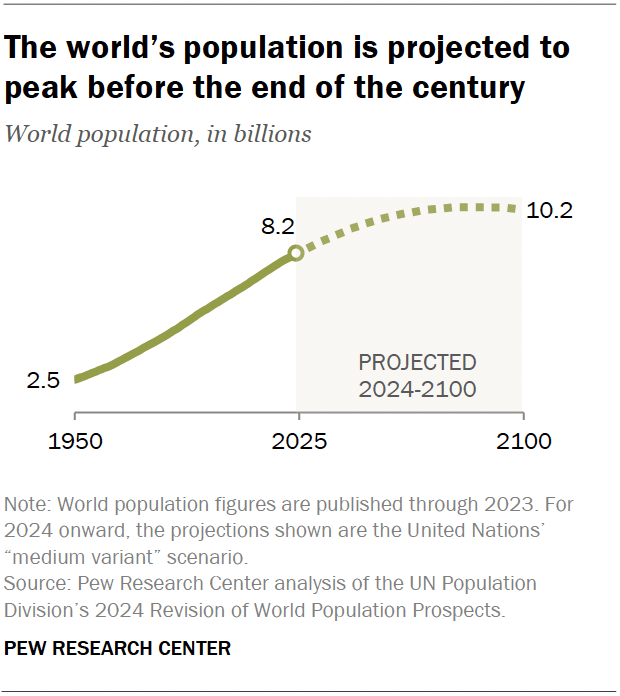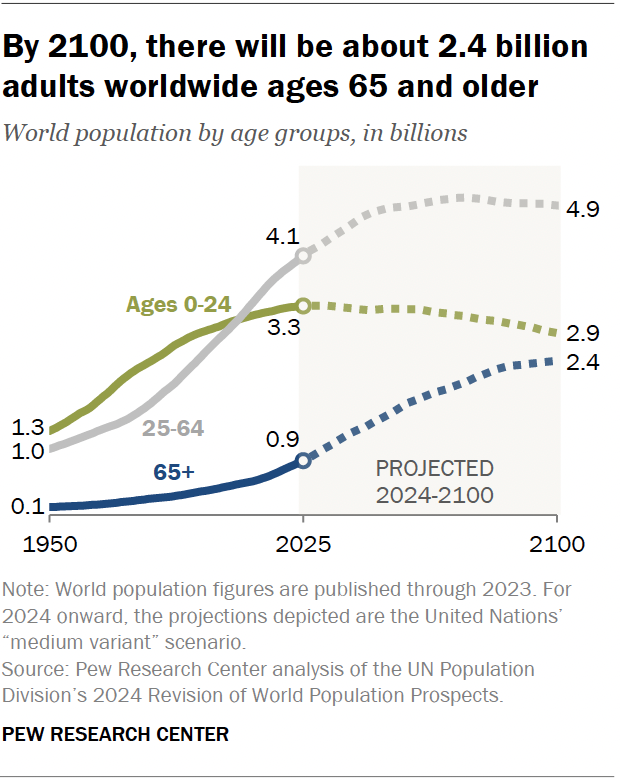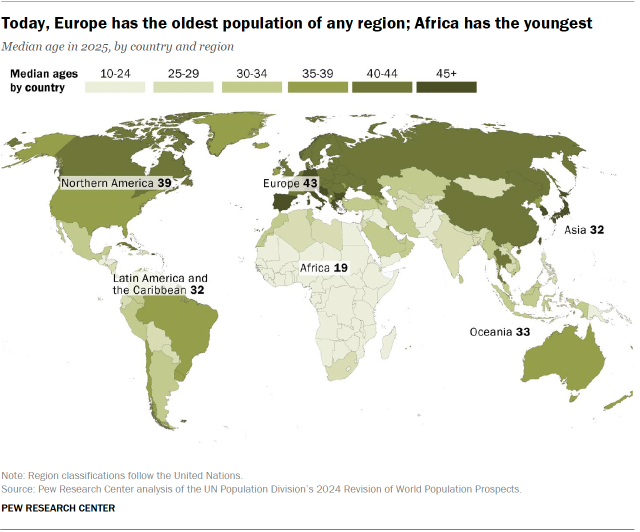 People enjoy the outdoors on the lawn of Vondelpark in Amsterdam. (Getty Images)
People enjoy the outdoors on the lawn of Vondelpark in Amsterdam. (Getty Images)On July 11, the United Nations will mark its annual World Population Day, which aims to raise awareness of global population trends and related issues.
Here are five facts about how the world’s population is projected to change in the coming decades, based on a Pew Research Center analysis of the UN’s World Population Prospects. The latest data is from 2023, so the numbers for 2024 and beyond are projections.
How we did thisAhead of World Population Day, Pew Research Center sought to explore the current state of the world’s population and how it is expected to change over the next 75 years. This analysis is based on the 2024 Revision of World Population Prospects released by the United Nations. The UN’s projections are based on “all available sources of data on population size and levels of fertility, mortality and international migration.”
Throughout this analysis, 2025 population numbers refer to the UN’s projections. Because future levels of fertility, mortality and international migration are inherently uncertain, the UN uses probabilistic methods that account for the past experiences of a given country and of other similar countries. This analysis uses the UN’s “medium variant” scenario, which is the median of many thousands of simulations.
Global population growth is expected to slow between now and 2100. The population more than tripled in the last 75 years, but the UN expects it to grow by only about 1.9 billion between now and 2100 (from 8.2 billion to 10.2 billion).
The population is expected to peak at 10.3 billion in 2084 and then decline to 10.2 billion through the end of the century.

The world’s three most populous countries in 2025 are expected to have radically different trajectories in the coming decades. Those countries are India (which has about 1.5 billion people today), China (1.4 billion) and the United States (347 million).
India is expected to continue growing until it peaks at 1.7 billion people in 2061. Then it’s expected to gradually decline to 1.5 billion by 2100.
China’s population has begun to shrink. It is projected to fall sharply to 633 million by 2100.
Meanwhile, the U.S. population is expected to grow slowly and steadily to 421 million by 2100.

Five countries are expected to contribute more than 60% of the world’s population growth by 2100: the Democratic Republic of Congo, Ethiopia, Nigeria, Pakistan and Tanzania.
Nigeria and Ethiopia are the only African countries among the world’s 10 most populous places in 2025. But by 2100, two more – the Democratic Republic of Congo and Tanzania – are expected to join the list.
Among the 10 countries projected to contribute most to global population growth, the U.S. is the only one located outside of Africa and Asia. Still, the U.S. is expected to fall from the world’s third-most populous country today to the sixth-most populous by 2100.

The world’s population is expected to get older. The world’s median age is projected to rise to 42 by 2100, up from 31 today and 22 in 1950.

The number of people ages 65 and older is expected to more than double, from 857 million today to 2.4 billion by 2100. That would increase their share of the global population from 10% to 24%.
By 2100, the world is expected to have roughly equal shares of people under 25 and people 65 and older. That would be a major shift from today, when younger people outnumber older adults by about four-to-one. In 1950, that gap was even wider, at about ten-to-one.
This shift is partly because of the growing number of older adults, but also because the number of people under 25 is projected to decrease from 3.3 billion today to 2.9 billion in 2100. The share of the global population under 25 is also expected to drop over the same time period, from 40% to 28%.
Africa is currently the world’s youngest region, and it’s projected to stay that way in 2100. The median age in Africa is 19 – significantly lower than any other region. Latin America and the Caribbean is the next-youngest region, but it has a much older median age of 32.
What is a median?
Medians are used to help readers see overall patterns in the data. The median age is the middle number in a list of all ages sorted from highest to lowest.
Europe’s median age is 43, making it the oldest region in the world.
By 2100, Africa’s median age is projected to rise to 35, but it is expected to remain the most youthful region by a wide margin.
Looking at countries rather than regions, the median age in the U.S. is 39. It ranks among the oldest third of countries globally but is slightly younger than many high-income countries in Europe and East Asia.

.png)




